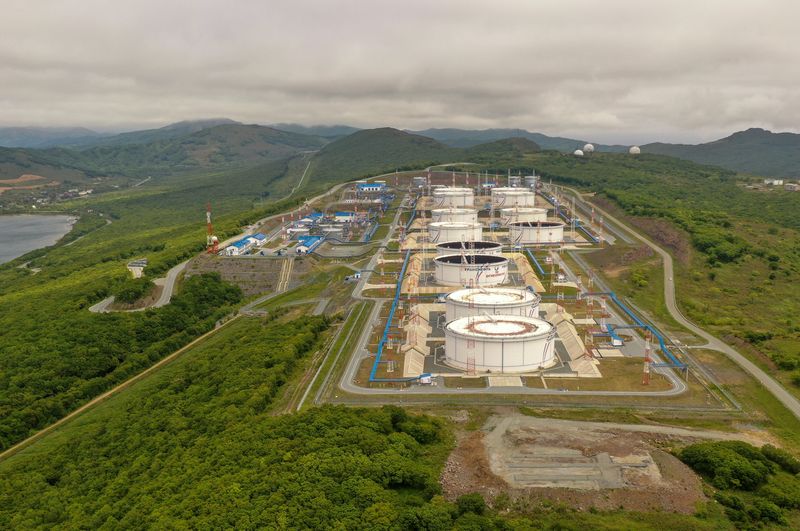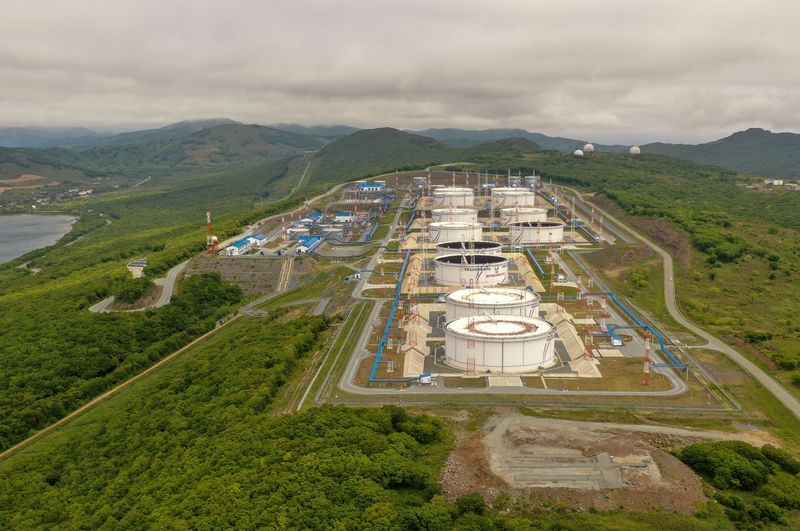Commodities
Oil slips on Sverdrup field restart, geopolitical fears support

By Alex Lawler
LONDON (Reuters) -Oil slipped on Tuesday pressured by the restart of production at Norway’s Johan Sverdrup oilfield, although investor caution arising from fears of an escalation in the Russia-Ukraine war limited the decline.
Equinor has resumed partial production from the oilfield, Western Europe’s largest, following a power outage. An outage at the North Sea field helped prices to climb by over 3% on Monday.
futures were down 29 cents, or 0.4%, to $73.01 a barrel by 1240 GMT, while U.S. West Texas Intermediate crude futures slipped by 34 cents, or 0.5%, to $68.82.
“I guess the partial restart of the Sverdrup field is the driver of the setback, as well as a slightly stronger U.S. dollar,” said Giovanni Staunovo, analyst at UBS.
The U.S. dollar edged up on Tuesday to within striking distance of its one-year high. A strong dollar makes commodities such as oil more expensive for other currency holders and tends to weigh on prices.
Another continuing outage provided support. Kazakhstan’s biggest oilfield, Tengiz, has reduced oil output by 28% to 30% for repairs which are expected to be completed by Saturday, the country’s energy ministry said.
A rise in geopolitical tensions also supported prices.
In a significant reversal of policy, U.S. President Joe Biden’s administration allowed Ukraine to use U.S.-made weapons to strike deep into Russia, two U.S. officials and a source familiar with the decision said on Sunday.
The Kremlin said on Monday that Russia would respond to what it called a reckless decision by the Biden administration, having previously warned that such a decision would raise the risk of a confrontation with the U.S.-led NATO alliance.

Investors are wary, said Toshitaka Tazawa, an analyst at Fujitomi Securities, as they are “assessing the direction of the Russia-Ukraine war after the weekend’s escalation”.
While oil’s outright price has found support this week, the market structure has weakened. flipped to contango for the first time since February on Monday in a sign that supply tightness was easing.
Commodities
Oil prices rise; U.S. crude inventories plunge, Russia-Ukraine truce eyed
Commodities
India’s Reliance to stop buying Venezuelan oil over US tariffs, sources say
Commodities
Oil prices climb on Venezuela supply worries

 Forex3 years ago
Forex3 years agoForex Today: the dollar is gaining strength amid gloomy sentiment at the start of the Fed’s week

 Forex3 years ago
Forex3 years agoUnbiased review of Pocket Option broker

 Forex3 years ago
Forex3 years agoDollar to pound sterling exchange rate today: Pound plummeted to its lowest since 1985

 Forex3 years ago
Forex3 years agoHow is the Australian dollar doing today?

 Cryptocurrency3 years ago
Cryptocurrency3 years agoWhat happened in the crypto market – current events today

 World3 years ago
World3 years agoWhy are modern video games an art form?

 Commodities3 years ago
Commodities3 years agoCopper continues to fall in price on expectations of lower demand in China

 Economy3 years ago
Economy3 years agoCrude oil tankers double in price due to EU anti-Russian sanctions























